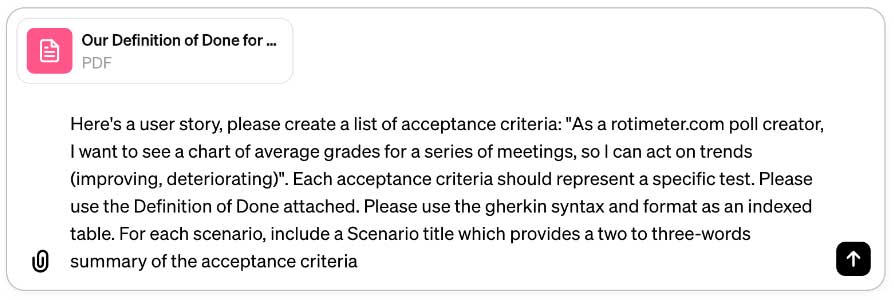Acceptance Criteria are an effective way to bake quality into User Stories and Features by asking ourselves “how this is going to actually behave?”. But creating useful acceptance criteria takes effort, so it’s often overlooked or not fully utilized.
ChatGPT can help make this process easier. However, the quality of the results depends a lot on how you phrase your questions


Chart Accessibility
Timeframe Selection
Data Accuracy
Trend Identification
Meeting Details
User Guidance
Error Handling
Not bad!
Provide more guidance: Attach your Definition of Done, and be more specific about the format


Index | Acceptance Criteria in Gherkin Syntax |
1 | Scenario: Basic usage |
2 | Scenario: Live update |
3 | Scenario: No data |
4 | Scenario: Responsive UI |
5 | Scenario: Basic explanation (tooltip) |
6 | Scenario: Fast response time |
7 | Scenario: Analytics event recorded |
This list is more comprehensive and more concrete.
Here’s the Definition of Done I provided:
A User Story is Done only when
To create high quality acceptance criteria using chatGPT, provide:
Request for additional information and prices
Subscribe to our newsletter, and stay updated on the latest Agile news and events